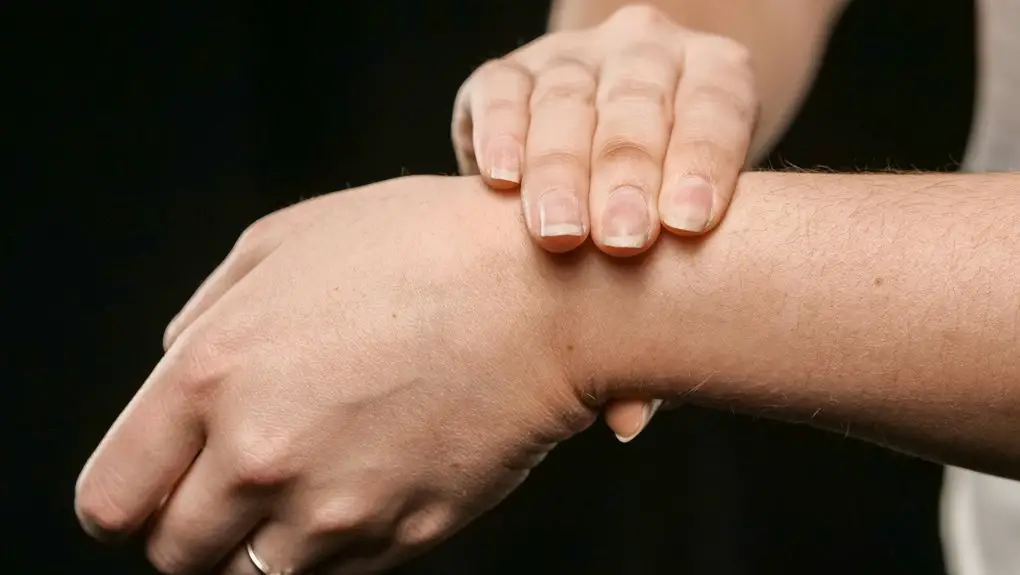Wrist rests improve your typing comfort by supporting your wrists and maintaining a neutral position. This helps prevent strain and keeps your hands relaxed, allowing for better blood circulation. By using a wrist rest, you can avoid awkward angles that lead to discomfort. Plus, it promotes better posture overall, enhancing your typing experience. There are many options out there, and you might discover how to choose the right one for you and maximize your comfort.
Key Takeaways
- Wrist rests support wrists and hands, promoting a neutral position that reduces strain during typing.
- They help maintain proper alignment with the keyboard, enhancing overall typing comfort.
- A cushioned surface on wrist rests alleviates tension and minimizes fatigue during extended typing sessions.
- Using a wrist rest encourages better posture, contributing to increased productivity and reduced discomfort.
- Regular use of wrist rests can improve blood circulation in the wrists, further enhancing typing comfort.
The Importance of Ergonomics in Typing
When you type for extended periods, the importance of ergonomics can’t be overstated. Proper ergonomics helps prevent strain and injury, allowing you to type comfortably and efficiently.
Make sure your chair supports your lower back, and keep your feet flat on the floor. Your keyboard should be at elbow height, so your arms stay relaxed rather than hovering. Position your monitor at eye level to avoid neck strain.
Don’t forget to take breaks; stretching and moving around can greatly reduce fatigue. Adjusting your workspace isn’t just about comfort; it can enhance your productivity, too.
How Wrist Rests Alleviate Strain
Wrist rests can greatly reduce strain during long typing sessions, as they provide essential support for your wrists and hands.
By keeping your wrists elevated and aligned, they help minimize awkward angles that can lead to discomfort. When you type without a wrist rest, your wrists often bend at unnatural angles, increasing the risk of repetitive strain injuries.
With a wrist rest, you can maintain a neutral wrist position, allowing for a more relaxed grip on the keyboard. This not only eases tension in your wrists but also promotes better blood circulation.
Additionally, a cushioned surface offers comfort, reducing the likelihood of fatigue and soreness. Investing in a quality wrist rest can considerably enhance your typing experience.
Enhancing Posture for Better Typing
While you mightn’t realize it, your posture plays an essential role in your typing comfort and overall productivity. When you sit up straight, with your shoulders relaxed and your feet flat on the ground, you create a stable foundation for your hands. This alignment helps prevent strain and allows for smoother movements as you type.
Keeping your wrists in a neutral position is vital too; elevated or bent wrists can lead to discomfort over time. A wrist rest can support this ideal alignment, promoting better posture.
Choosing the Right Wrist Rest for Your Needs
Selecting the right wrist rest can greatly enhance your typing experience, especially if you spend long hours at the keyboard.
First, consider the material. Gel, foam, and wood each offer different levels of support and comfort. Gel tends to be cooler, while foam provides a softer touch, and wood offers a sturdy feel.
Next, think about size and height. Your wrist rest should align with your keyboard to maintain a comfortable angle. If you travel often, a portable option might be best.
Additionally, look for a non-slip bottom to keep it in place during use.
Finally, check for easy cleaning options, as hygiene is essential for maintaining a comfortable workspace.
Choose wisely for ideal comfort and productivity!
Tips for Using Wrist Rests Effectively
To maximize the benefits of your wrist rest, you should position it correctly to guarantee proper alignment with your keyboard. Your wrists should rest comfortably on the wrist pad while your fingers hover over the keys.
Position your wrist rest correctly to ensure comfort and proper alignment with your keyboard for an optimal typing experience.
Avoid resting your wrists while typing, as this can lead to strain. Instead, use the wrist rest during breaks. Make sure your chair and desk height allow your elbows to stay at a 90-degree angle for ideal posture.
Experiment with different materials to find what feels best for you, whether that’s gel, foam, or wood. Finally, keep your wrist rest clean to prevent irritation, and replace it if it shows signs of wear.
Proper use can greatly enhance your typing comfort.
Frequently Asked Questions
Can Wrist Rests Be Used for Gaming Keyboards?
Yes, you can definitely use wrist rests with gaming keyboards. They help maintain a comfortable wrist position, allowing you to play longer without discomfort. Just make sure they fit well with your keyboard setup.
How Do I Clean My Wrist Rest?
To clean your wrist rest, use a damp cloth with mild soap. Wipe it gently, avoiding excess moisture. For stubborn stains, try rubbing alcohol. Let it dry completely before using it again.
Are There Wrist Rests for Left-Handed Users?
Yes, there are wrist rests designed specifically for left-handed users. You can find options that cater to your ergonomic needs, ensuring comfort during typing. Look for products labeled as left-handed or ambidextrous to suit your preferences.
Do Wrist Rests Help With Carpal Tunnel Syndrome?
Wrist rests can help alleviate discomfort associated with carpal tunnel syndrome. They provide support, keeping your wrists in a neutral position, which reduces strain. It’s important to choose one that suits your typing style for maximum benefits.
Can I Use a Wrist Rest With a Laptop?
Yes, you can definitely use a wrist rest with a laptop. Just make sure it aligns well with your keyboard and provides enough support to keep your wrists comfortable while you type.
